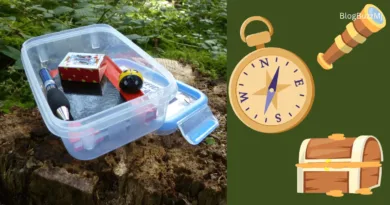Aquascaping with Rocks and Plants: A Comprehensive Guide for Beginners – 2023
Is Aquascaping a Hobby? Yes, Aquascaping with rocks and plants is an exciting hobby that allows you to create a beautiful underwater landscape in your aquarium. It’s a creative way to express yourself and add a touch of nature to your home. If you’re new to aquascaping, you might feel overwhelmed by the different types of rocks and plants available and how to use them effectively in your aquascape.
In this guide, we’ll provide you with a comprehensive overview of aquascaping with rocks and plants, covering everything from the basics to more advanced techniques. We’ll also provide tips and tricks for creating stunning aquascapes that will be the envy of all your friends.
Section 1: Introduction to Aquascaping with Rocks and Plants
Aquascaping is the art of arranging aquatic plants, rocks, and other natural elements in an aquarium to create a beautiful and natural underwater environment. It is a popular hobby for many aquarium enthusiasts and has gained widespread popularity in recent years.
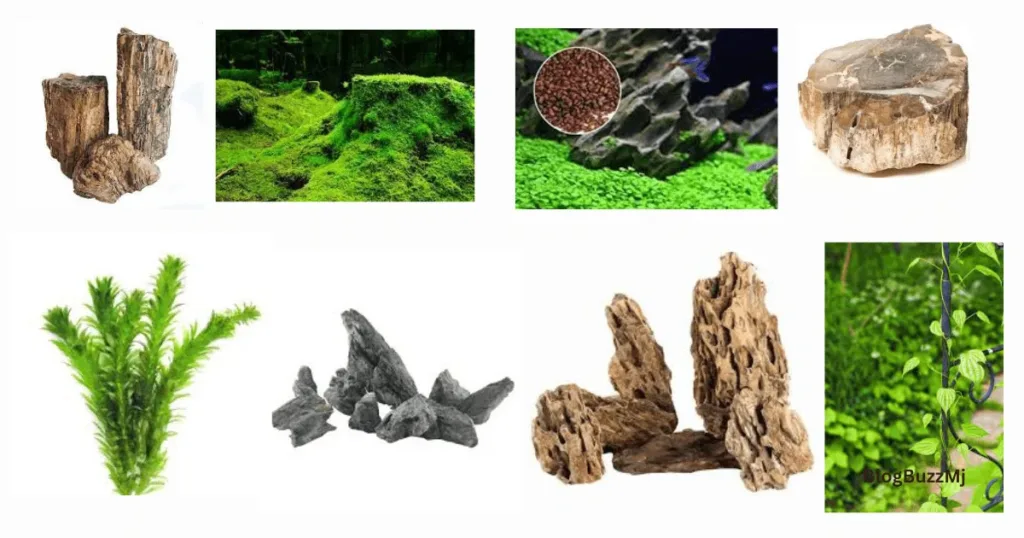
What is Aquascaping with Rocks and Plants?
Aquascaping with rocks and plants involves using rocks and plants to create a natural and visually appealing aquascape. The process involves selecting the right combination of rocks and plants, arranging them in the aquarium, and maintaining the right environment to help them grow and thrive.
The Benefits of Aquascaping with Rocks and Plants
There are many benefits to aquascaping with rocks and plants. For starters, it is a great way to create a natural and aesthetically pleasing environment in your home or office. Aquascapes can also provide a calming and relaxing atmosphere, which can be beneficial for your mental health.
Additionally, aquascaping with rocks and plants is a great way to promote the health and wellbeing of your aquarium inhabitants. Plants provide oxygen, absorb carbon dioxide and provide shelter for fish and other aquatic animals. The rocks help to create a natural environment that is similar to the fish’s natural habitat.
The Different Types of Rocks and Plants Used in Aquascaping
There are a wide variety of rocks and plants that can be used in aquascaping. Some popular rocks include Seiryu Stone, Dragon Stone, and Lava Rocks. These rocks are popular because of their natural appearance and texture, which adds to the overall aesthetic of the aquarium.
When it comes to plants, there are many different species that can be used in aquascaping. Some popular plants include Mosses, Java Fern, and Cryptocoryne. These plants are popular because they are easy to care for and can thrive in a variety of water conditions.
The Equipment You Need to Get Started
To get started with aquascaping with rocks and plants, you will need a few basic pieces of equipment. This includes an aquarium tank, filter, heater, lighting, substrate, rocks, and plants. It is important to choose the right equipment for your aquarium and to make sure that you have everything you need before getting started. Right Aquascaping equipments can be purchased at several E-commerce sites like Amazon , Alibaba etc.
Section 2: Setting up Your Aquarium for Aquascaping
Aquascaping requires a properly set up aquarium to ensure the healthy growth of plants and the maintenance of the aquatic ecosystem. In this section, we will discuss the essential steps involved in setting up your aquarium for aquascaping.
Choosing the right aquarium
The first step in setting up an aquascape is choosing the right aquarium. The aquarium should be of adequate size, and the shape and design should be chosen based on your preferred style of aquascaping. A rectangular or square-shaped aquarium is the most commonly used type for aquascaping.
Setting up the substrate
Substrate refers to the material used at the bottom of the aquarium. The substrate provides the necessary nutrients and support for the plants to grow. The substrate can be made of sand, gravel, or specialized plant substrates. The substrate should be cleaned thoroughly before adding it to the aquarium to avoid cloudiness of the water.
Lighting requirements for plants
Lighting is crucial for the growth of plants in an aquascape. The intensity and duration of light exposure should be carefully regulated to ensure the healthy growth of the plants. The type of lighting required depends on the plants used in the aquascape. The spectrum and intensity of the lighting should be adjusted to meet the requirements of the plants.
Water conditions for aquascaping
Maintaining the proper water conditions is essential for the health of the plants and aquatic animals in the aquarium. The water should be free of chlorine, chloramines, and other harmful chemicals. The pH level and temperature of the water should be maintained at optimal levels to promote the growth of the plants and keep the aquatic ecosystem healthy. Regular water changes and monitoring of water parameters are necessary for maintaining healthy water conditions.
Section 3: Types of Aquascaping with Rocks and Plants
Aquascaping is an art form, and there are different styles you can choose from to create your masterpiece. Each style has its unique features and requirements, and selecting the right one is crucial to achieve the desired result. In this section, we will explore some of the most popular types of aquascaping with rocks and plants.
Nature Aquariums
Nature aquariums are inspired by nature and aim to replicate the look and feel of natural environments, such as forests, streams, or rivers. They often feature a wide range of plants, driftwood, and rocks, creating a lush and diverse ecosystem for fish and other aquatic creatures. Nature aquariums are known for their aesthetic appeal and ability to provide a sense of tranquility and relaxation.
Dutch-style Aquariums
Dutch-style aquariums originated in the Netherlands and focus on creating a dense and colorful plant arrangement. This style uses a combination of different plant species, arranged in a way that creates a stunning visual display. Dutch-style aquariums require high levels of maintenance, including regular trimming and pruning to maintain the desired shape and form.
Iwagumi-style Aquariums
Iwagumi-style aquariums are minimalistic and focus on the arrangement of rocks to create a sense of balance and harmony. The rock placement is crucial in this style, and every detail matters. Iwagumi-style aquariums often feature a single species of plant, creating a serene and calming atmosphere.
Biotope Aquariums
Biotope aquariums aim to replicate a specific natural environment, such as a river or lake, and focus on creating a biologically accurate ecosystem. The plants, rocks, and fish used in biotope aquariums are all from the same geographic region and are chosen to reflect the natural environment accurately. Biotope aquariums require extensive research and planning to ensure that the right species are used and that the conditions are suitable for the selected plants and fish.
Choosing the right type of aquascaping depends on your personal preferences and the environment you want to create. Each style has its unique features and requirements, and you should choose the one that best fits your skill level and the resources available to you.
Section 4: Choosing the Right Rocks for Your Aquascape
Rocks are one of the most important elements in any aquascape, as they provide a natural-looking hardscape and can also serve as anchor points for plants. Choosing the right rocks for your aquascape can make a big difference in its overall appearance and success.
Types of rocks commonly used in aquascaping
Seiryu stone
This is a popular type of rock used in aquascaping. It has a unique texture and color that can add visual interest to any aquascape. Seiryu stone is also known for its hardness, which makes it long-lasting and durable in aquariums.
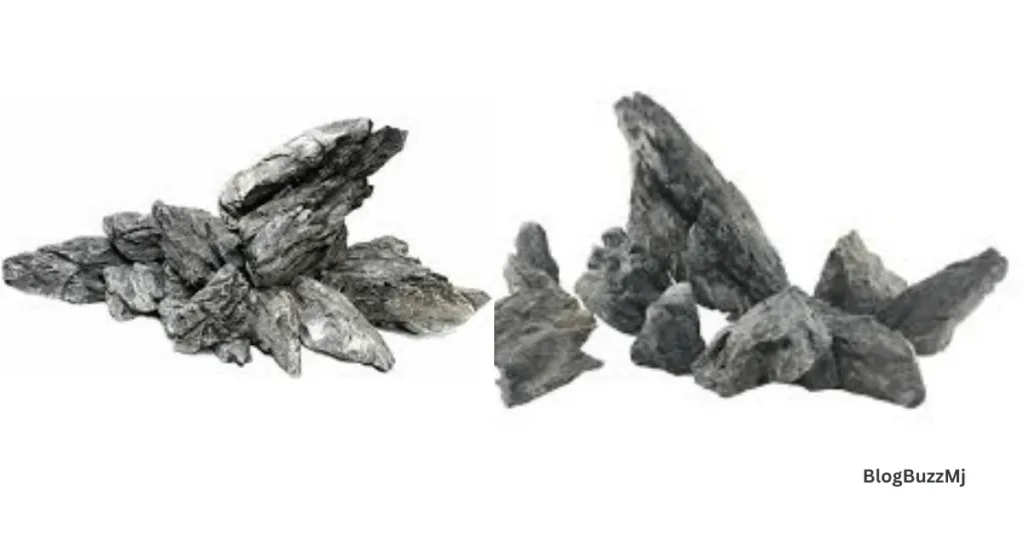
Dragon stone
This is another popular type of rock used in aquascaping. It has a unique texture and shape that can add depth and dimension to your aquascape. Dragon stone is also porous, which makes it a great anchor for mosses and other plants.
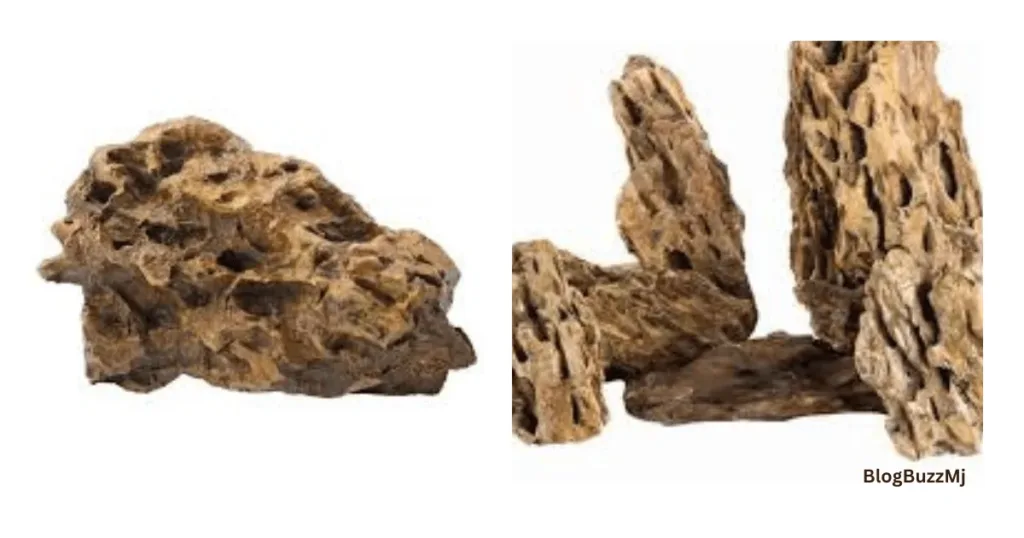
Lava Rocks
Lava rock is a volcanic rock that is porous, lightweight, and creates a natural look in the aquarium. It comes in a variety of shapes and sizes, making it versatile for creating different aquascapes.
One of the benefits of using lava rock is that it has a rough texture, which allows beneficial bacteria to colonize and create a healthy environment for your aquatic plants and fish.
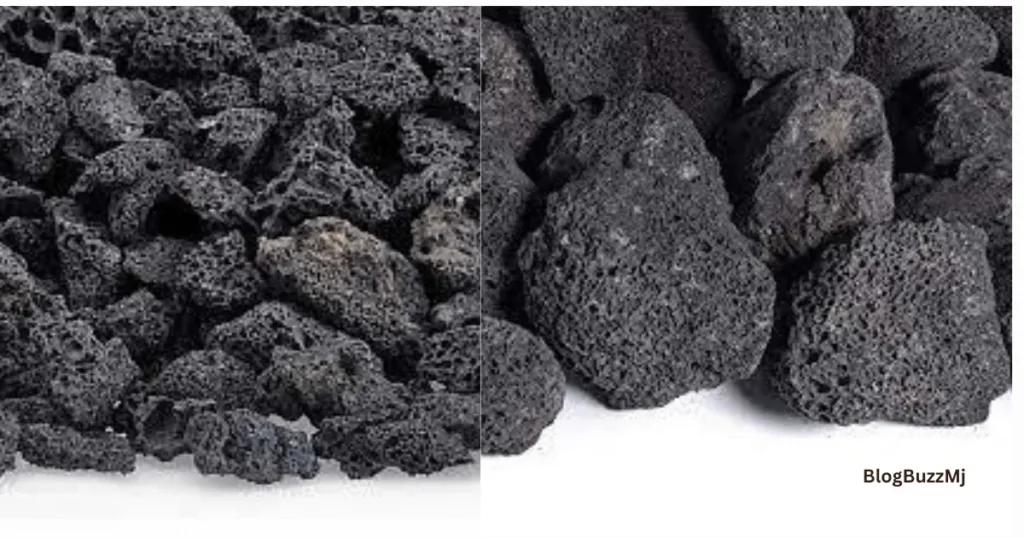
Petrified wood
This is a type of fossilized wood that has been mineralized over millions of years. Petrified wood is durable and can add a natural and rustic look to your aquascape.
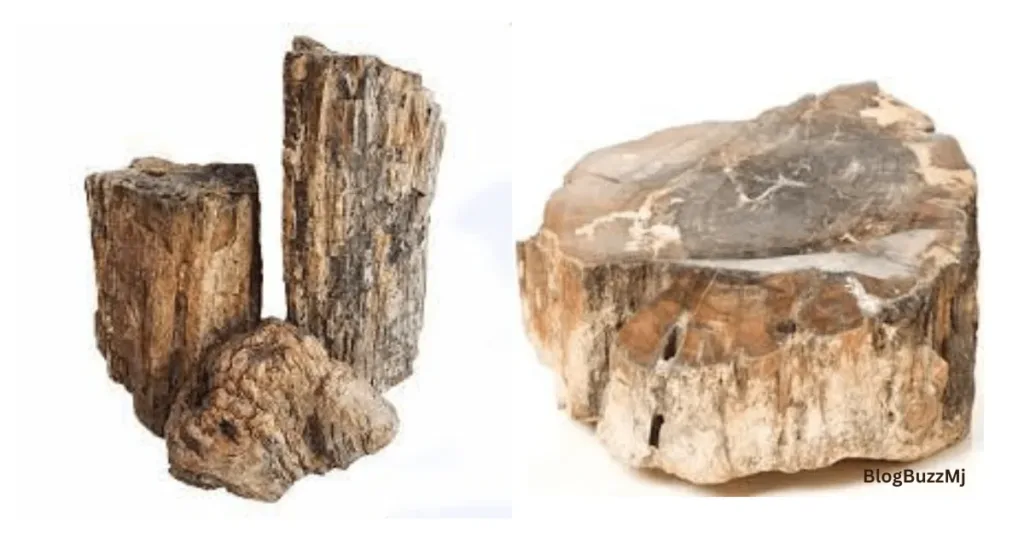
Choosing rocks based on your aquascape style
Different types of rocks are suited for different types of aquascapes. For example:
Nature aquariums: For a nature aquarium, you would want to choose rocks that have a natural, organic look. Seiryu stone and dragon stone are both popular choices for nature aquariums.
Dutch-style aquariums: For a Dutch-style aquarium, you would want to choose rocks that have a more formal and structured appearance. This can include rocks like lava rock or river rock.
Iwagumi-style aquariums: Iwagumi-style aquariums are characterized by a simple, minimalist design that features one or a few rocks as the focal point. For this style, you would want to choose rocks that are clean and have a smooth surface, such as seiryu stone.
Preparing rocks for your aquarium
Before adding rocks to your aquarium, it is important to clean and prepare them properly. This can involve soaking the rocks in water and scrubbing them with a brush to remove any dirt or debris. It is also important to test the rocks for any chemical properties that could affect your aquarium’s water chemistry.
In addition, it is important to ensure that the rocks you choose are safe for your aquarium inhabitants. Some types of rocks, such as limestone or marble, can raise the pH of your aquarium water and harm your fish and plants. Always research the rocks you plan to use in your aquarium and consult with a knowledgeable aquarium professional if you have any doubts.
By choosing the right rocks for your aquascape and preparing them properly, you can create a beautiful and healthy environment for your aquatic plants and fish.
Section 5: Choosing the Right Plants for Your Aquascape
Aquatic plants are an integral part of an aquascape, providing not only aesthetic appeal but also numerous benefits for your aquarium’s ecosystem. Choosing the right plants for your aquascape involves considering factors such as the size of your aquarium, the style of aquascape you want to create, and the lighting and nutrient requirements of the plants.
Types of Aquatic Plants
There are various types of aquatic plants available in the market, but it’s essential to select the one that suits your aquarium’s conditions and requirements. Here are some of the most common types of aquatic plants:
Stem Plants
These plants are the most common and widely used in aquascaping. They are easy to grow and maintain, and their long stems add a vertical dimension to the aquascape. Examples of stem plants include Rotala, Ludwigia, and Hygrophila.
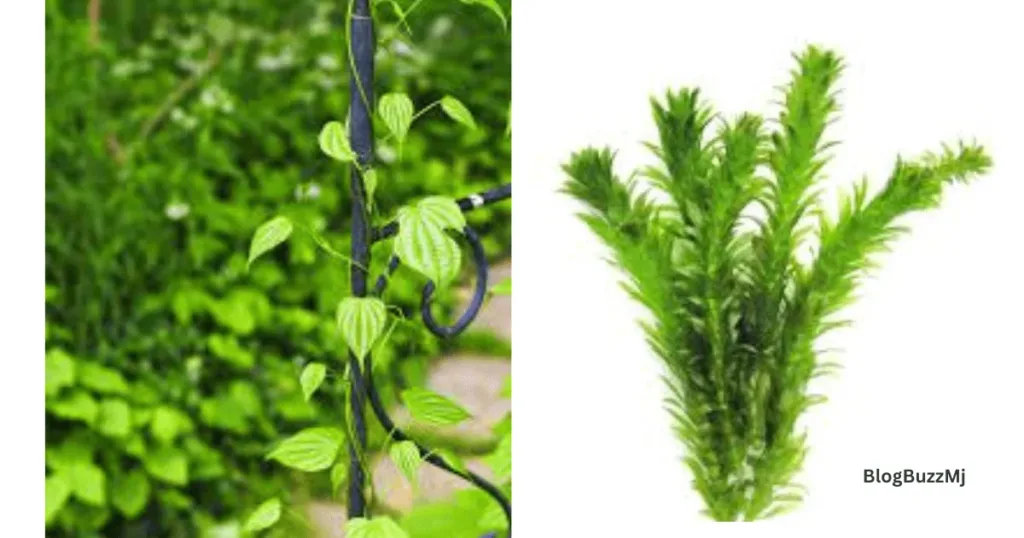
Carpeting Plants
These plants are used to create a foreground cover in the aquarium, resembling a carpet. They require high light and nutrient levels to grow well. Examples of carpeting plants include Glossostigma, Monte Carlo, and Hemianthus callitrichoides.
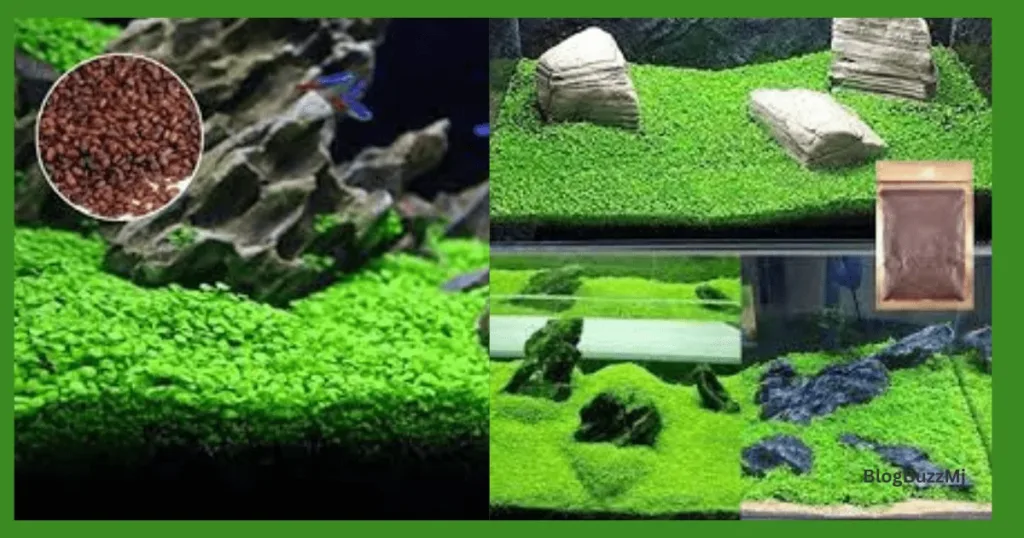
Mosses
Mosses are versatile plants that can be used to create various shapes and textures in the aquarium. They are low maintenance and can be tied to rocks or driftwood to create a moss wall or tree. Examples of mosses include Java moss, Christmas moss, and Flame moss.
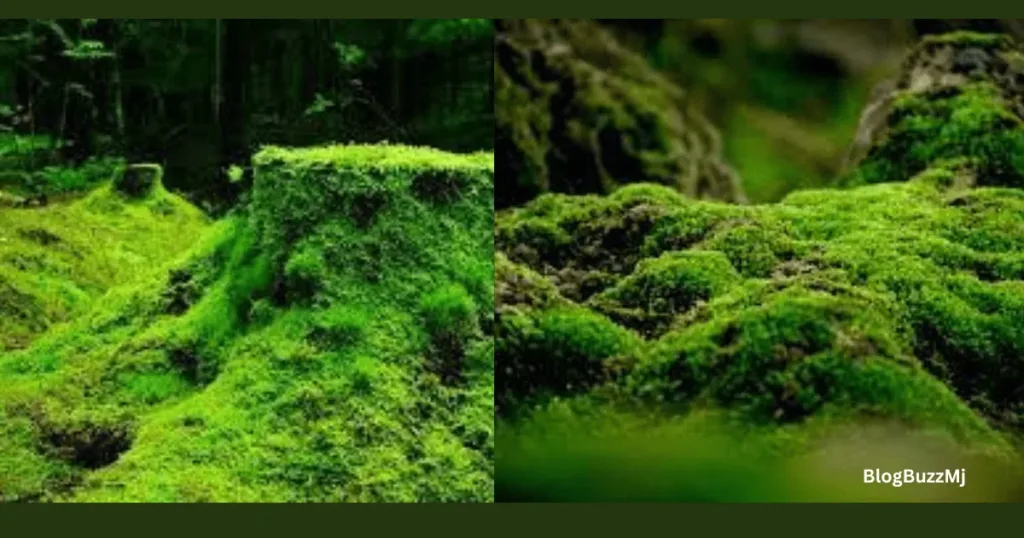
Cryptocoryne
Cryptocoryne is a popular genus of aquatic plants that is often used in aquascaping. These plants come in a variety of shapes, sizes, and colors, making them a versatile choice for any aquascape. Cryptocoryne plants are known for their hardiness and ability to tolerate a wide range of water conditions, making them a great choice for beginners.
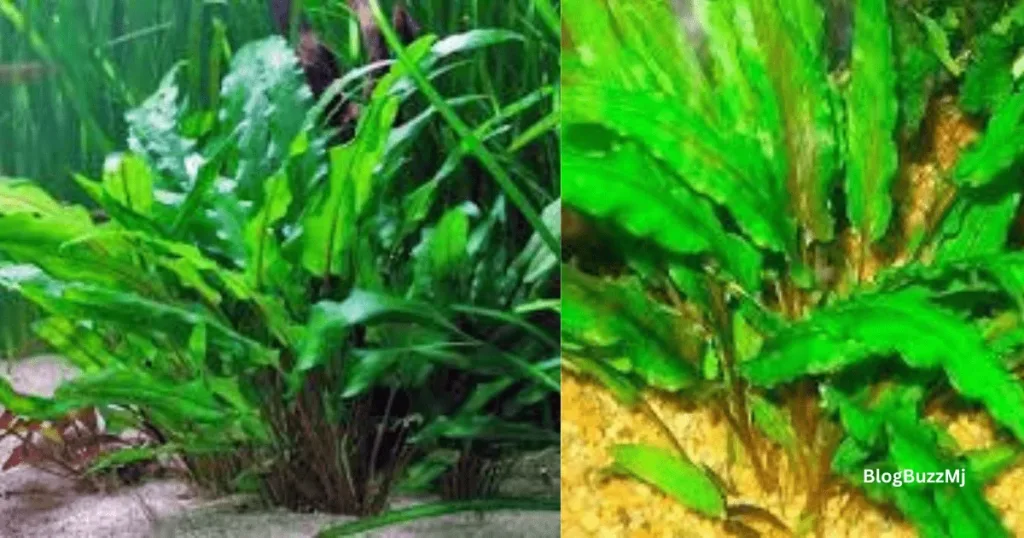
Ferns
Ferns are low maintenance plants that can thrive in low light conditions. They can be attached to rocks or driftwood to create a natural-looking aquascape. Examples of ferns include Java fern, Bolbitis, and Microsorum.
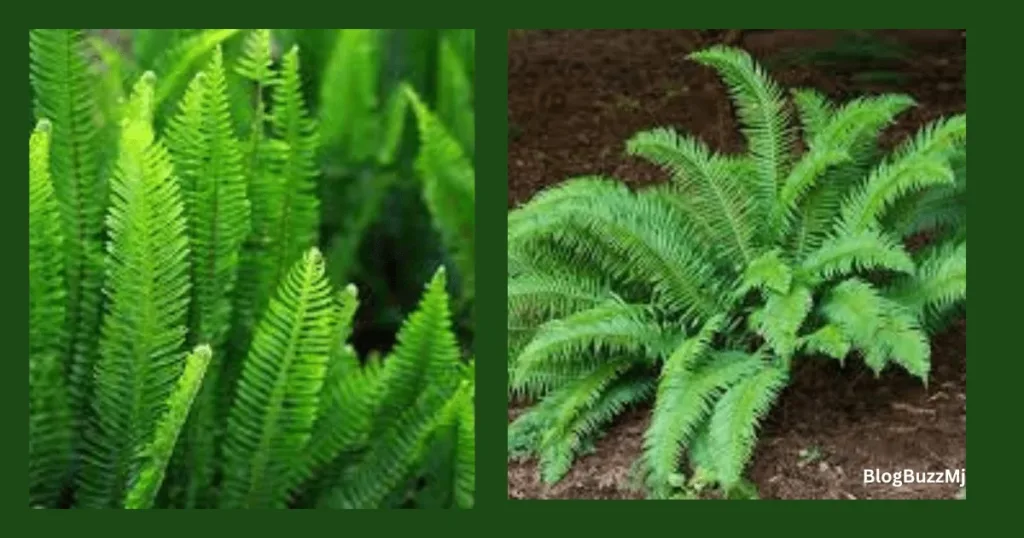
Choosing Plants Based on Your Aquascape Style
The style of your aquascape also plays a significant role in determining the type of plants you choose. For example, if you’re creating a Nature aquarium, you may want to use a combination of stem plants and ferns to create a natural-looking aquascape. If you’re creating a Dutch-style aquarium, you may want to use carpeting plants and stem plants to create a bold, colorful display.
Planting and Maintaining Aquatic Plants
Once you’ve chosen your aquatic plants, it’s essential to plant them correctly and provide the right conditions for their growth. Here are some tips for planting and maintaining aquatic plants:
Ensure the substrate is suitable for the plants you’re using. Some plants, such as carpeting plants, require a nutrient-rich substrate to grow well.
Plant the roots firmly in the substrate and avoid leaving any air pockets around the roots.
Provide adequate lighting and nutrients for your plants. This can be achieved through the use of LED lights and liquid fertilizers.
Regularly trim and prune your plants to maintain their shape and promote healthy growth.
Section 6: Designing Your Aquascape with Rocks and Plants
Now that you have all the necessary information about rocks, plants, and aquarium setup, it’s time to dive into the creative process of designing your aquascape. Designing an aquascape is like creating a miniature underwater landscape that combines rocks and plants in a visually appealing way.
Creating a hardscape with rocks
The first step in designing your aquascape is to create a hardscape using rocks. A hardscape is the arrangement of rocks and driftwood in your aquarium, and it forms the foundation of your aquascape. The right hardscape can create a sense of depth and create interesting shadows and reflections in your aquarium.
When selecting rocks for your hardscape, consider the color, texture, and shape of the rocks. It’s best to choose rocks that have a natural appearance and avoid rocks that are too uniform or have sharp edges that can damage your fish. Use a combination of large and small rocks to create visual interest and texture in your hardscape.
Once you’ve chosen your rocks, start arranging them in your aquarium. Play around with different placements and try to create natural-looking formations. You can use the rule of thirds to create a balanced and visually appealing hardscape. The rule of thirds is a design principle that involves dividing your aquarium into thirds both horizontally and vertically and placing your rocks and driftwood along these imaginary lines.
Creating a layout with plants
After you’ve created your hardscape, it’s time to add plants to your aquascape. The plants you choose will depend on your desired style, the lighting in your aquarium, and the water conditions.
When choosing plants, consider their color, texture, and size. Some popular plants for aquascaping include Anubias, Java Fern, and Amazon Sword. It’s best to choose plants that are compatible with your aquarium’s lighting and water conditions. Plants require different amounts of light and nutrients to thrive, so make sure to do your research before selecting plants.
When planting your aquatic plants, consider their placement and how they will interact with your hardscape. You can create a natural-looking layout by planting your plants in groups or clusters and using different heights and textures to create depth and interest.
Techniques for creating depth and perspective
To create a realistic and visually appealing aquascape, it’s essential to create depth and perspective in your design. There are several techniques you can use to create the illusion of depth in your aquarium.
One technique is to use smaller rocks and plants in the foreground and larger rocks and plants in the background. This creates a sense of distance and adds depth to your design. Another technique is to use the rule of thirds to create a balanced and visually appealing layout. You can also use different colors and textures to create contrast and depth in your aquascape.
In addition to creating depth, it’s also essential to consider the perspective of your design. Consider where you will be viewing your aquarium from and arrange your hardscape and plants accordingly. If your aquarium is against a wall, consider placing larger rocks and plants in the center of your design, with smaller rocks and plants on the sides.
By using these techniques, you can create a visually stunning aquascape that looks natural and creates a sense of depth and perspective. Remember to experiment with different layouts and plants until you find the perfect design for your aquarium.
Section 7: Caring for Your Aquascape
Now that your aquascape is complete, it’s important to take good care of it. Maintaining your aquascape involves a combination of tasks, including keeping the water quality high, trimming and pruning plants, cleaning the aquarium, and troubleshooting common problems.
Maintaining Water Quality
The key to a thriving aquascape is good water quality. Regular water changes and testing for nitrate, nitrite, and ammonia levels are important to keep the water parameters stable. The frequency of water changes will depend on the size of your aquarium and the stocking level. Generally, a 10-20% water change every week is recommended.
Pruning and Trimming Plants
Regular pruning and trimming of plants is necessary to prevent overgrowth and maintain the desired shape of your aquascape. Overgrown plants can block light and nutrients from reaching other plants, leading to their decline. Use aquarium scissors or a sharp razor blade to trim off dead or yellow leaves, and to shape plants as desired.
Cleaning Your Aquarium
Regular cleaning of your aquarium is essential for maintaining water quality and the overall health of your fish and plants. Remove any uneaten food, debris, and excess plant matter from the aquarium using a siphon or net. Use a soft brush to gently clean the walls of the aquarium and the hardscape.
Troubleshooting Common Problems
Even with proper care, problems can arise in an aquascape. Some common issues include algae growth, fish diseases, and plant deficiencies. Algae growth can be controlled by reducing the amount of light and nutrients in the aquarium. Fish diseases can be prevented by maintaining good water quality and quarantining new fish before adding them to the aquarium. Plant deficiencies can be corrected by adding fertilizers or adjusting the lighting and CO2 levels.
Section 8: Conclusion
In this guide, we have explored the art of aquascaping with rocks and plants. We have discussed the benefits of this hobby, the different types of aquascaping, the equipment needed to get started, how to choose the right rocks and plants, and how to design and care for your aquascape.
Recap of the benefits of aquascaping with rocks and plants
Aquascaping with rocks and plants is a hobby that offers many benefits. It provides a relaxing and therapeutic experience as you immerse yourself in creating a beautiful underwater world. It is also a great way to add some natural beauty to your living space and can be an interesting conversation starter with your guests.
In addition to these aesthetic benefits, aquascaping with rocks and plants can also improve the quality of your home’s air by filtering out pollutants and producing oxygen. It can also help to reduce stress levels and improve mental wellbeing.
Final tips and advice for creating a stunning aquascape
To create a truly stunning aquascape, it is important to be patient, creative, and diligent in maintaining your aquarium. Here are some final tips and advice for creating a beautiful and healthy aquascape:
Research and plan: Before you begin aquascaping, do some research on different styles and layouts. Plan your design carefully before adding any rocks or plants.
Choose the right rocks and plants: Select rocks and plants that are suitable for your chosen style and the needs of your fish.
Add depth and perspective: Use techniques such as layering and creating a sense of depth to make your aquascape more visually appealing.
Monitor and maintain: Regularly check and maintain your aquarium to ensure the water quality is optimal for your plants and fish.
Enjoy the process: Aquascaping with rocks and plants is a fun and rewarding hobby. Take the time to enjoy the process and experiment with different designs and layouts.
In conclusion, aquascaping with rocks and plants is a fascinating hobby that can bring beauty and tranquility into your life. With the right knowledge and equipment, anyone can create a stunning underwater world to enjoy and admire.


